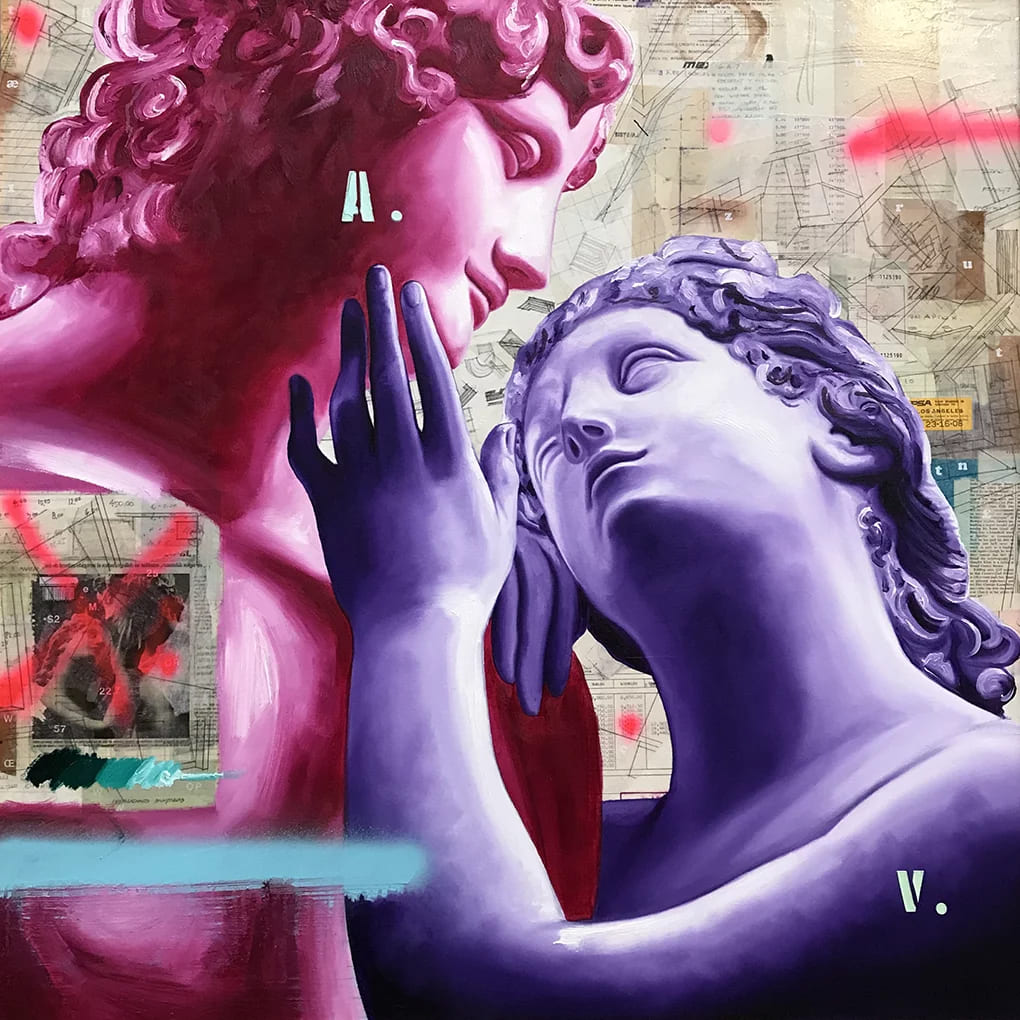
The exhibition includes works that break idyllic landscapes with elements such as reds and yellows that denote violence and explosions, this amalgamated with portraits of variations of eyes, skin, hands, architectural plans and other elements that intend to show the horror of emptiness that human beings have experienced throughout their existence.
To represent the main themes of his work, such as crises of belief, corruption and sexuality, the author also drew on his own experience of living in the absence of his father at an early age. In fact, the architectural plans and handwritten notes in his works belonged to the architect Fernando Rodarte Sobrado -the artist's father- who died in 1990 when Diego was six years old.
According to Santiago Espinosa de los Monteros' interpretation contained in an official communiqué, in the piece El creyente: "consumption, housing, legal status, shortages, infrastructure, urban equipment, water, drainage, electricity, green spaces, gardens, parks, squares, vegetation, school equipment, kindergarten, primary, secondary, middle, professional, literacy, production, surplus value... are some of the words that can be read surrounding the face of Friedrich Nietzsche, the same work that was made with the remains of an old letter-press adhesive stencil.
Horror Vacui captures a palette of colors with bright tones. Enigmatic, hidden characters; symbols and contemporary codes that reflect their environment and provoke the viewer. He uses human skin in his work as a pretext to project the dark and bright side that exists in every human being.




